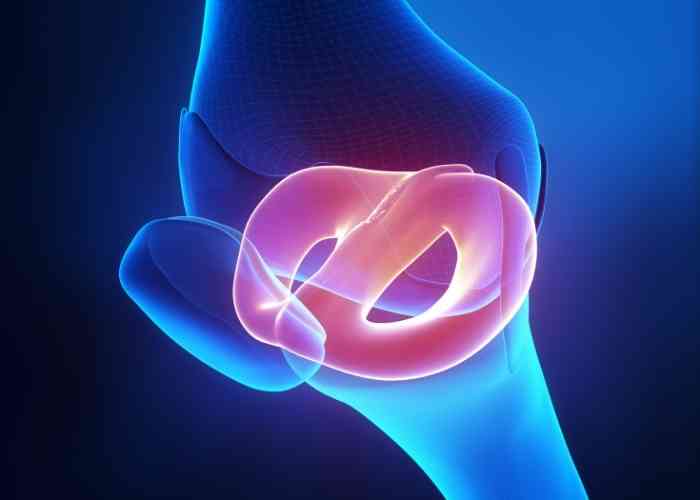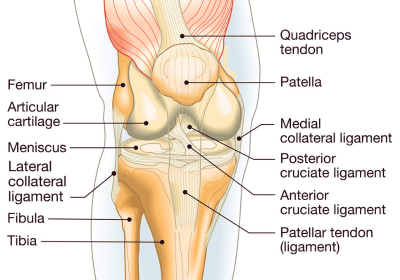Meniscus Repair and Meniscectomy Surgeon
If you’ve torn your meniscus, you may be able to have it repaired. If the damage is extensive, you may need to have it removed. Selecting a surgeon with experience performing a meniscus repair or a meniscectomy is crucial to a positive outcome. Doctor Prem Ramkumar, meniscus repair surgeon, is located in Long Beach and serves patients in Los Angeles, Orange County, and surrounding Southern California areas. Contact Dr. Ramkumar’s office today!

What is a meniscus tear?
A meniscus tear is the most common injury affecting the knee and can occur in athletes and non-athletes. The menisci are strong, rubbery, wedge-shaped discs in the knee that act as shock absorbers between the femur (thigh) bone and tibia (shin). The cartilage keeps the knee stable, allowing it to move smoothly. Each knee has two menisci:
- Lateral meniscus – handles 80% of the load applied to the outside of the knee joint
- Medial meniscus – handles 50% of the load applied to the inside of the knee joint
A meniscus tear can be mild or severe. It can split in half, rip around its circumference, or be left hanging. The success of surgically addressing a meniscus tear depends on three main factors: (1) whether the tear was a result of an acute incident, (2) the status of the surrounding articular cartilage, (3) the degree of disability. It is important to not treat chronic meniscus tears in the setting of arthritis as the meniscus tear is often a result of underlying arthritis. In this case, addressing the meniscus without addressing the arthritis may not provide durable relief for the patient. However, if the knee is otherwise normal and the meniscus tear is acute, causing disability, and not responding to non-surgical treatments, this may be an appropriate surgical candidate.
It is also important to note that the vast majority of meniscus surgeries involve removing – not repairing – the diseased meniscus. The small degree of meniscus removed is unlikely to affect the natural history of arthritis progression, but this has not been definitively studied or proved. Only certain menisci are able to be repaired, and we as a society are trying to repair more of these tears to possibly prevent arthritis. Again, whether this actually does so is unknown. Dr. Prem Ramkumar, meniscus surgeon, is located in Long Beach and serves the Los Angeles, Orange County, and surrounding Southern California areas.
What is a meniscus repair?
A meniscus repair is a surgical procedure that reconnects the injured part of the meniscus to healthy tissue, allowing it to receive the blood flow it needs to heal. The surgery is performed arthroscopically, using a small camera called an arthroscope and specialized instruments. A repair is most successful when the tear is in a vascular (‘red zone’ or outer third of the tissue) zone with healing capacity. He uses strong sutures to reconnect the healthy portion of the meniscus to facilitate blood flow, allowing it to heal and return stability to the knee joint. The minimally invasive procedure works best on younger patients who have improved blood supply to the knee. Ideal candidates have a healthy weight, non-arthritic joint, and a favorable tear pattern. Meniscus repairs have a slightly prolonged rehabilitation by about 3-6 weeks to allow the tissues time to heal.

What if a meniscus tear can’t be repaired?
Dr. Ramkumar will do everything he can to save a torn meniscus, but in some cases, a repair is not possible. For example, if the tear is in the avascular (white) zone with limited healing capacity, Dr. Ramkumar will not be able repair the tissue with confidence that this will provide long-term efficacy. Attempting to repair irreparable tissue increase the risk of reoperation. Instead, he will remove the torn portion of the meniscus and leave as much healthy tissue as possible. This procedure is called a meniscectomy. Like the meniscus repair, Dr. Ramkumar will perform the meniscectomy using minimally invasive arthroscopy. The least amount of meniscus is taken to provide cushion between articular cartilage and potentially reduce the risk of arthritis development.
What is the recovery process after a meniscus repair or meniscectomy?
A meniscus repair or a meniscectomy are generally outpatient procedures unless you have an underlying health issue. A brace is used in the setting of displaced meniscus repairs. After surgery, physical therapy will begin, and weight-bearing will be allowed according to Dr. Ramkumar’s protocols, which can be found here: partial meniscectomy rehab, nondisplaced meniscus rehab, and meniscus root or displaced meniscus repair rehab. Complete recovery generally takes up to 5 months, but each person is different, and recovery times vary.


